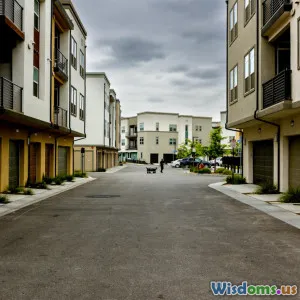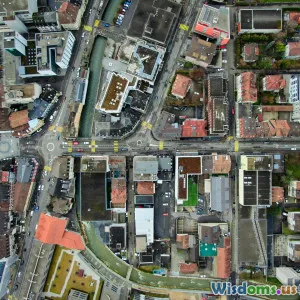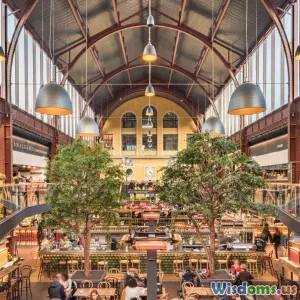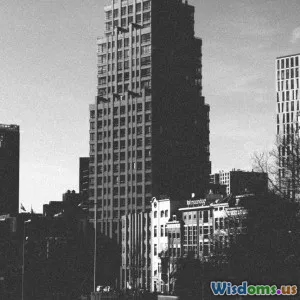
How Affordable Housing Designs Foster Community Ties
8 min read Discover how thoughtful affordable housing design strengthens social bonds and community resilience. (0 Reviews)
How Affordable Housing Designs Foster Community Ties
Affordable housing is often discussed in terms of cost and accessibility, but its true value lies much deeper—within the social fabric it helps weave. Thoughtful design in affordable housing projects does more than merely provide shelter; it nurtures community ties, empowers residents, and promotes social wellbeing. This article delves into the ways in which architecture and urban design principles come together to foster a strong sense of belonging, shared identity, and collaboration among residents of affordable housing.
Introduction: The Social Dimension of Affordable Housing
Housing is more than walls and roofs—it’s a platform for community and connection. Recent studies conducted by the Urban Institute reveal that neighborhood cohesion significantly improves residents’ quality of life, especially in lower-income communities. Yet affordable housing is often designed under tight budget constraints, risking overlooking human-centric features.
But what if affordable housing could be more than just cost-effective dwellings? Through innovative architectural strategies, designers can create vibrant communal spaces, facilitating interaction and mutual support among residents. These designs catalyze community resilience, reduce social isolation, and generate positive overall outcomes.
Designing for Social Interaction: Shared Spaces as Community Anchors
The Crucial Role of Common Areas
Common areas like gardens, playgrounds, community halls, and shared courtyards serve as natural gathering points. Architect Alejandro Aravena’s “half a good house” model in Chile emphasizes shared infrastructure to build a scalable community fabric. Such spaces encourage spontaneous interactions that build trust and friendship.
For example, the Via Verde housing project in the South Bronx showcases roof gardens, walking paths, and community rooms, transforming affordable housing into a thriving neighborhood hub. According to a survey by the NYC Department of Housing Preservation, residents in Via Verde report higher levels of neighborliness and cooperation than those in typical developments.
Flexibility and Adaptability in Space Use
Multi-functional spaces increase the likelihood of varied social activities. Flexible common areas can host events ranging from children’s playgroups to senior gatherings or cultural celebrations, enabling intergenerational and intercultural connections. This adaptability is vital in diverse urban settings where different needs and activities must coexist comfortably.
Architectural Elements that Encourage Connectivity
Visual Transparency and Openness
Transparent elements like large windows, open staircases, and balconies facing shared courts invite visual connection and reduce isolation. Transparency promotes safety through natural surveillance and signals presence, subtly encouraging social interaction.
Singapore’s Pinnacle@Duxton public housing exemplifies this well, with sky gardens and open walkways linking residents visually and physically. These architectural elements are credited with strengthening social ties and reducing crime.
Human-Scale Design and Walkability
Designing at a human scale—meaning comfortable building heights, approachable facades, and pedestrian-friendly paths—invites residents to spend more time outside and interact. Walkability is crucial; when people can easily move around outside their homes, the casual “hello”s turn into deeper relationships.
The Tietgen Student Housing in Copenhagen offers inspirational lessons here with its circular, clustered design that encourages movement, encounters, and collaboration among residents.
The Psychology of Community: Designing for Belonging and Pride
Identity Through Architecture
Distinctive and culturally sensitive design elements give residents a sense of pride and ownership. Affordable housing that respects local heritage counters perceptions of low-income projects as monotonous or temporary.
For instance, the Quinta Monroy housing project integrates local materials and architectural motifs that resonate with community identity, making housing more than a necessity—it becomes a reflection of collective culture.
Participation and Co-Creation
Involving residents in the design process cultivates ownership and strengthens community bonds. Participatory planning lets residents express their needs and shape their environment. The participatory process itself is a social catalyst, nurturing empathy and collaboration even before construction begins.
Socio-Economic Impacts of Community-Focused Affordable Housing Designs
Reducing Social Isolation and Improving Mental Health
Social ties forged through shared spaces and community activities have measurable health benefits. A 2020 study published in the International Journal of Environmental Research and Public Health linked community-focused housing to reduced rates of depression and anxiety among low-income populations.
Economic Stability and Support Networks
Strong community bonds in affordable housing settings foster informal support systems such as child care co-ops, tool-sharing groups, and job networking, all contributing to economic resilience. In Chicago’s New City neighborhood, community gardens and enclaves have become platforms for skill-sharing and small business incubators.
Challenges and Considerations
Balancing Density with Livability
Affordable housing projects often face pressure to maximize unit counts, potentially curbing communal space sizes. Innovative vertical designs and rooftop use can mitigate this tension but need careful planning.
Ensuring Inclusivity
Designs must accommodate the needs of diverse groups: families with children, seniors, disabled residents, and different cultural backgrounds. Universal design standards and culturally responsive elements ensure no one feels marginalized.
Long-Term Maintenance
Community spaces require upkeep to remain welcoming. Partnerships between management and residents encourage stewardship but need sustainable funding models.
Conclusion: Building More Than Housing—Building Community
Affordable housing design holds transformative potential beyond affordability alone. By prioritizing shared spaces, architectural transparency, human-scale design, cultural resonance, and participatory processes, developers can cultivate enriching environments. These environments nurture community ties essential for social resilience, wellbeing, and upward mobility.
Cities and architects face unique challenges but also opportunities to redefine affordable housing’s role at the heart of communities. Thoughtful designs that recognize residents not just as occupants but as collaborators and citizens can change how neighborhoods grow and thrive.
To build affordable homes—without fostering connection—is to build houses, not communities. The future of affordable housing lies in the thoughtful intersection of architecture and social design, creating places where people do more than live; they belong.
Rate the Post
User Reviews
Popular Posts





















